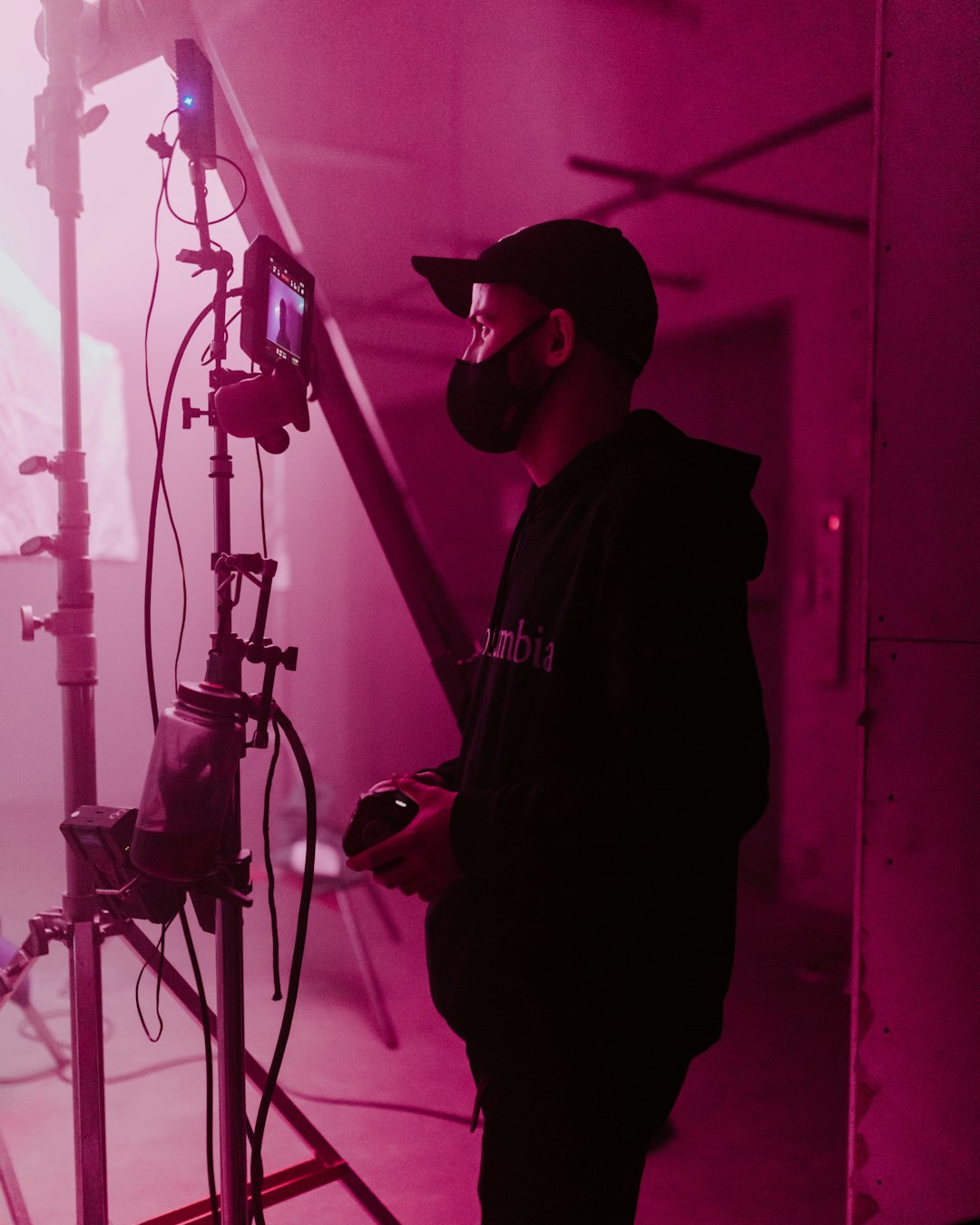Record-Breaking Investment Numbers Tell the Story

Georgia’s film industry has become something of a phenomenon in recent years, with numbers that would make even Hollywood executives do a double-take. The Georgia Film Office reported that film and television productions spent $2.6 billion in Georgia during fiscal year 2024, a total of $11 billion over the last three fiscal years. Historically, the industry hit a peak of $4.4 billion in direct spending in FY 2022, reflecting its capacity for massive economic influence. A 2023 study by Georgia State University estimated that from 2012 to 2023, production spending grew over 17% annually, generating a cumulative $29.65 billion economic impact and supporting $12.2 billion in wages over the past five years.
The sheer scale of these investments shows just how far Georgia has come from its humble beginnings as a filming location. A study found that the incentive has created 60,000 jobs and returns $6.30 for every $1 spent. A 2023 study pegged total industry-related jobs at nearly 60,000 Georgians, including indirect roles like construction and hospitality, with an additional 15,400 jobs projected from planned investments by 2025.
The 30% Tax Credit That Changed Everything

The Film Tax Credit is a 20% base transferable tax credit, with an additional 10% uplift for providing promotional value to the State. Because this is a tax credit, rather than a rebate, there is no limit on the amount of tax credits that can be earned in a given year, and there is no sunset clause on the program. Since 2008, Georgia has had one of the most reliable and competitive film tax credit programs worldwide. This isn’t just good policy – it’s brilliant marketing wrapped in an irresistible financial package.
The structure of Georgia’s tax credit program is particularly attractive to producers because it’s transferable, meaning companies can sell these credits to other businesses if they don’t owe enough Georgia taxes to use them directly. Georgia has the largest production tax credit in the country, with $1.24 billion in credits certified last year. Without it, over 92% of productions would reportedly film elsewhere, per a 2023 study, underlining its role in attracting projects like Avengers: Endgame and Stranger Things.
Massive Infrastructure Expansion Creates Production Powerhouse

Georgia’s commitment to building world-class production facilities has been nothing short of remarkable. Since the film tax incentive was revised in 2008, stage space has increased from 45,000 square feet in 2010 to more than 4.5 million in 2024. The state boasts over 5.6 million square feet of soundstage space as of 2024, up from 45,000 square feet in 2010, making it second only to California in the U.S. The state is currently number two in stage space after California, having surpassed New York.
The infrastructure boom continues with ambitious expansion plans. An additional 800,000 square feet came online since January 2023, with projections to reach 7 million by the end of 2025—potentially the most nationwide. Major studios like Trilith, Tyler Perry Studios, and Assembly Atlanta anchor this growth, supported by $1.28 billion in studio construction investment from 2012–2022, with nearly $3 billion more planned for 2024–2027.
Strategic Repurposing of Military Facilities

Georgia has shown remarkable creativity in transforming abandoned military installations into state-of-the-art production facilities. Several new soundstage campuses came online in FY24, including Assembly Atlanta in Doraville, located on the 135-acre site of the former General Motors Assembly plant, and BlueStar Studios at the former Fort Gillem. Tyler Perry Studios also repurposed a U.S. military facility, making its home at Atlanta’s former Fort McPherson. This approach has allowed Georgia to create massive production complexes at a fraction of the cost of building from scratch.
The transformation of these facilities represents more than just economic efficiency – it’s a perfect example of adaptive reuse that breathes new life into formerly abandoned properties. Tyler Perry Studios, in particular, has become a symbol of Georgia’s film industry success, occupying a 330-acre facility that was once a bustling military base.
Post-Production Services Are Getting a Major Boost

Georgia isn’t just focusing on production – it’s building a complete ecosystem that includes post-production services. Virtual effects studios like Whiskytree are also working to meet a rising demand for post-production services. The visual effects studio opened a facility in Alpharetta in January to provide on-set visual effects supervision, compositing, environment creation, set extension, effects simulation, XR/VR, and more. Just last month lawmakers passed a bill to restore a tax credit for film postproduction activities – like editing and visual effects – that had expired in 2023. House Bill 129 extends the expiration date for the postproduction credit to 2031 and caps the amount of the tax break that film companies can qualify for at $10 million annually.
A tax credit for stand-alone film and television postproduction companies will go back into effect on January 1, 2026. Overseen by the Georgia Department of Revenue, postproduction companies can earn tax credits on footage shot in or outside of the state and posted in Georgia. This strategic move ensures that Georgia captures more of the production value chain, not just the initial filming.
Blockbuster Productions Choose Georgia as Home Base

The proof is in the productions, and Georgia has landed some of the biggest names in entertainment. We continue to host beloved episodic productions like ‘Cobra Kai,’ ‘Will Trent,’ and ‘Stranger Things’ in Georgia while new film and television projects ramp up. Netflix last week finally wrapped the sixth and final season of “Cobra Kai” with wrap party photos popping up in social media. Other projects that wrapped include the “Saturday Night Live” opening night movie and the second season of ABC’s “Will Trent,” which will be back for a third season in 2025.
Major Marvel productions have also called Georgia home, with films like “Avengers: Endgame” and “Black Panther” utilizing the state’s facilities and crew base. For instance, “Stranger Things” is under the pseudonym “Cedar Lodge.” “Superman” is listed as “Genesis.” The Disney film “Thunderbolts” is under the cheeky cereal name “Oops All Berries.” “Moana” is using the fake name “Canon.”
Skilled Workforce Development Through Georgia Film Academy

Additionally, Georgia residents are being prepared for jobs in the film and television industry, so they can fulfill their industry dreams near where they live. Productions benefit from resources like the Georgia Film Academy, which is responsive to the needs of the industry and can quickly develop curriculum to suit productions’ needs. The Georgia Film Academy has been instrumental in creating a skilled local workforce that can meet the demands of high-budget productions.
This workforce development approach ensures that Georgia isn’t just attracting productions temporarily – it’s building the human capital necessary to sustain long-term growth in the industry. The industry employs thousands, with over 5,000 technicians and workers in Atlanta alone. A medium-budget feature film employs 150–175 locals, while larger productions hire 200–250. The emphasis on local hiring has created a virtuous cycle where more skilled workers attract more productions, which in turn creates demand for even more skilled workers.
Economic Impact Beyond Direct Spending

The economic benefits of Georgia’s film industry extend far beyond the direct spending on productions. The production filmed in all corners of the state, and over the course of the project: Over $73 million was spent in Georgia. More than 2,300 Georgians were hired. 12,594 hotel nights racked up, contributing local and state taxes that help the bottom line. These numbers illustrate how film production creates a ripple effect throughout the local economy.
Beyond the direct spend of films like “The Color Purple,” productions have been shown to have lasting impacts on Georgia cities and towns. While attractions in Covington lure “The Vampire Diaries” fans and Senoia continues to benefit from the growth brought by “The Walking Dead,” other film tourism ventures are taking shape. The tourism benefits can last for years or even decades after filming wraps, creating a sustainable source of revenue for local communities.
Geographic Diversity Provides Endless Location Options

Georgia’s geographic diversity has been a major selling point for productions looking for varied shooting locations within a single state. From the mountains of North Georgia to the coastal areas near Savannah, the state offers an incredible range of natural backdrops. The Georgia Film Office maintains a locations database of thousands of properties, and provides scouting assistance as well as certifying projects for the tax incentive for TV and movies.
This geographic advantage means that productions can shoot multiple scenes requiring different environments without having to relocate to different states, saving both time and money. The state’s varied architecture also provides opportunities for period pieces and contemporary stories alike, from antebellum mansions to modern urban landscapes.
Industry Recognition and Rankings

See why Georgia was ranked No. 1 in Film Production by Business Facilities Magazine in their 2024 Rankings Report. We are thrilled to be recognized by Business Facilities for the second year in a row for our continued commitment to Georgia’s film industry, and eagerly look forward to the future of production in the state. This recognition from industry publications validates Georgia’s position as a leading production destination.
In context, Georgia’s film industry outpaces most states, rivaling New York and trailing only California in production volume and infrastructure. The state has successfully positioned itself as the primary alternative to California for major productions, offering many of the same advantages at a lower cost.
Current Challenges and Industry Adaptation

Despite its success, Georgia’s film industry has faced some recent challenges. Production spending for the same fiscal year was down to $2.6 billion from $4.1 billion the previous year, according to the Georgia Film Office. The industry absorbed repeated hits to the body — a global pandemic, then the double whammy of WGA and SAG-AFTRA strikes followed by decline in film and TV shoots many are now referring to as the “Great Contraction” — causing Georgia production spend to drop from $4.4 billion in fiscal year 2022 to $2.6 billion in fiscal year 2024.
As productions have decreased, so have bookings at Georgia’s production studios. Says Cardellia Hunter, the director of film and entertainment for the City of Atlanta mayor’s office, there are “a whole lot of empty lots right now.” However, industry experts remain optimistic about the long-term prospects. Its $2.6 billion FY 2024 spend, while lower than the $4.4 billion peak, reflects a post-strike recovery, with experts anticipating a return to higher levels by late 2025 as new studios and projects ramp up.
Political Stability and Industry Support

Georgia’s film industry has enjoyed remarkable political stability, with support from both Republican and Democratic leadership. Perhaps more telling is a survey of 1,000 likely Georgia voters released by the GSEC in March, which found that 82% feared a loss of jobs and 78% feared Georgia businesses would lose out on revenues if the incentive was changed or limited. “Ultimately, the film tax incentive in Georgia is actually very, very popular,” says GSEC executive director Kelsey Moore.
This broad public support has helped protect the industry from political interference. The failure to pass a bill is a reprieve for the Georgia film industry, which relies heavily on the incentive and had been watching the legislation closely. Even when legislators have proposed changes to the tax credit program, the industry has successfully worked with lawmakers to maintain the core benefits that make Georgia attractive to producers.
Innovation and Technology Integration

Georgia’s film industry isn’t just keeping up with technological changes – it’s embracing them. Francis Ford Coppola recently announced the opening of the All-Movie Hotel in Peachtree City, a former Days Inn motel remodeled with post-production facilities while his team was in Georgia producing the upcoming film “Megalopolis.” Now, the hybrid property will host both production companies and film fanatics, serving as both a resource for filmmakers and a tourist spot.
This innovative approach to combining production facilities with tourism shows how Georgia is thinking creatively about maximizing the value of its film industry investments. The state is also grappling with the implications of artificial intelligence in film production, with some studios adapting their expansion plans accordingly.
Looking Ahead to 2025 and Beyond

The future looks bright for Georgia’s film industry, despite recent challenges. Following tremendous post-pandemic growth, the direct spend numbers from the past two fiscal years show the market beginning to adjust to new norms. And as the state celebrates 50 years of the Georgia Film Office, film production interest in Georgia remains strong. Even so, at any given time in early 2025, Georgia typically has 20 to 30 TV and film productions active, showcasing its ongoing role as a production hub.
The combination of generous tax incentives, world-class infrastructure, skilled workforce, and geographic diversity has created a perfect storm for continued growth. This blend of economic clout, infrastructure, and workforce makes Georgia a global leader in film production. As the industry continues to evolve, Georgia’s adaptability and commitment to supporting film production positions it well for continued success in the years ahead.



